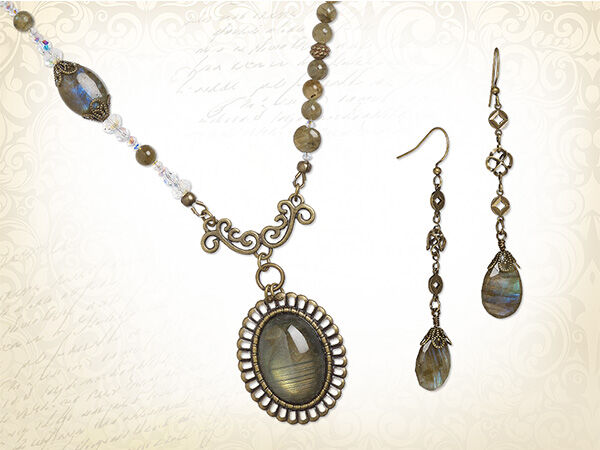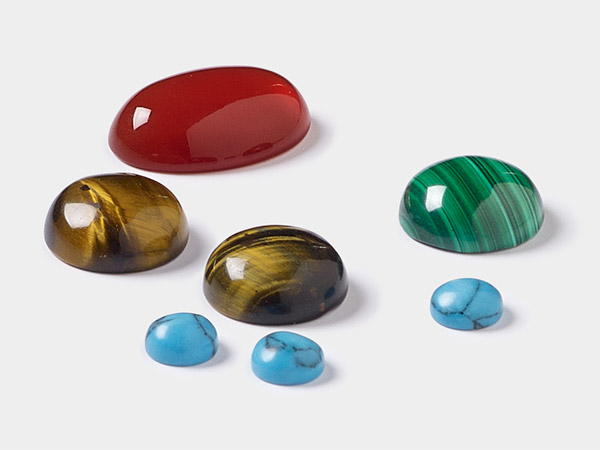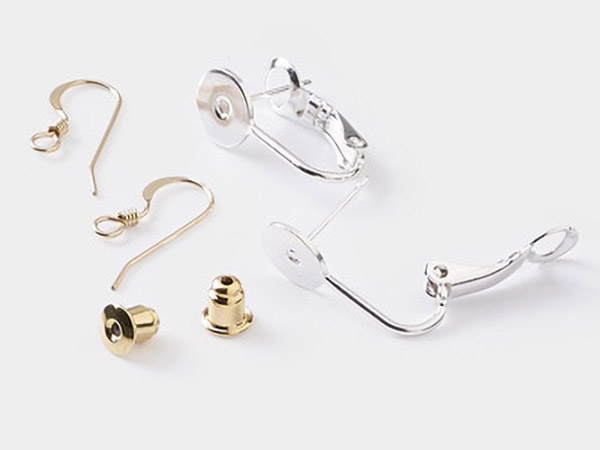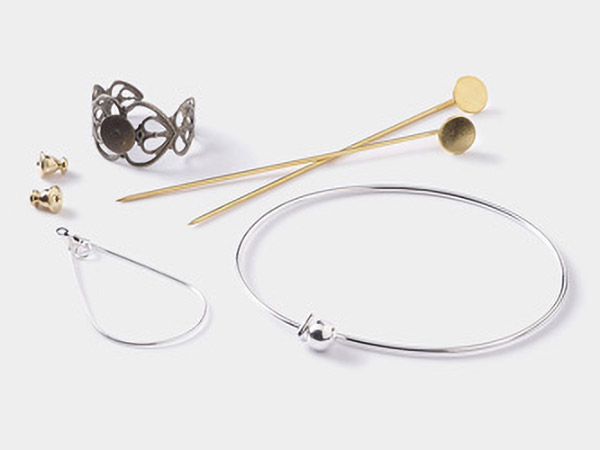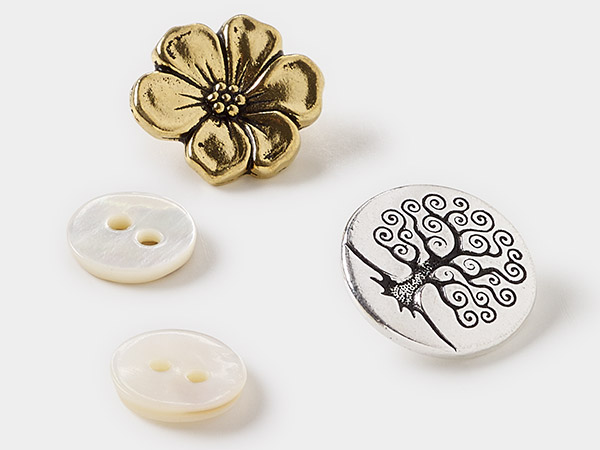How To Buy, Restore and Upcycle Grandma's Jewelry
Old jewelry and old jewelry components can become new jewelry creations, and this article is here to give you some tips. Modernizing, restoring and reusing Grandma's jewelry bits is a popular and efficient way to make sure family treasures aren't lost forever. Any fan of estate sale shopping will be able to get ideas for what to do with old jewelry and use these tips to turn their second-hand treasures into first-rate style!
Note: Be sure to double-check if the piece(s) you intend to upcycle are antiques or otherwise high-value. If something is a genuine antique, it's best to preserve this piece of wearable history, rather than redesign it.
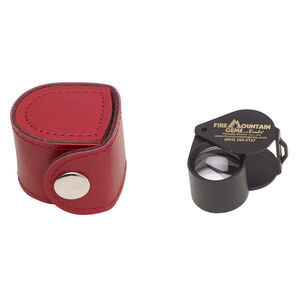
Examine the jewelry for metal purity marks or maker's marks. For this, you will need a bit of knowledge and some specialized tools. Your first investment should be a handheld loupe—your best friend for getting up close and personal with jewelry! It's a great practice to have a jeweler's loupe in your pocket or purse for shopping expeditions. In different lighting and environments, the 10-times magnification is worth a million bucks. (If you wear glasses, be sure to remove them before using the loupe, for better visibility.)
Below is a list of the different kinds of metal purity markings you may find on old jewelry. Look for them on the undersides of bangles, pendants and brooches, on the clasps of bracelets and necklaces, on the inside of ring shanks/bands and the posts or hooks of earrings (and sometimes on the earnuts of post or stud-style earrings). Some chains have tabs or wide connecting loops that are stamped to indicate their metal content.
- 900 = coin silver (old term, not very common)
- GF, or 14/20GF = 14Kt Gold-Filled
- 12/20GF = 12Kt Gold-Filled
- 10/20GF = 10Kt Gold-Filled
- 300 = 8kt gold
- 750, or 18Kt = 18-Karat gold
- 925, STER or Sterling = Sterling silver
- 999, or 24Kt = 24-Karat gold
- Company hallmark—Mostly on antiques and larger manufacturers. This will look like a logo or initials and can be researched online
If it's not stamped, it still may be precious metal. In the USA, precious metal can't be sold as such without a stamped purity designation; however, on some old pieces or jewelry components from Europe, the stamp has worn off or simply is not there. When repurposing costume, vintage or broken jewelry, knowing what your metal contents are makes a difference during cleaning.
Like clothing, accessory and jewelry styles tend to recycle themselves as well. It's fun and easy to take these "found" treasures and re-fashion them into usable accessories. You can make new things using Grandma's old jewelry, since many of the "old" styles are in vogue right now, but with a different twist:
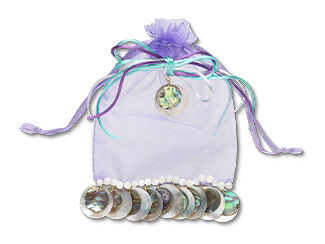
- Broken necklace or bracelet found in Mom's jewelry box: Add beads (gemstone, glass, crystal, etc.) in coordinating colors to create a stunning "new" necklace.
- Ear clip to home décor: Have a fabulous but woefully single clip-on earring? Add it to the center of a barrette finding or hairpin finding for a fabulous hair accessory!
- Bracelet to hair stick: Use an old bracelet or necklace component to add color to a dangle from a hair stick.
- Crystal brooch to hair comb: Cut the back off the brooch and use epoxy and FireLine® thread to bond it to a comb. It creates an elegant hair accessory, suitable for day, evening or wedding wear.
- Buttons to jewelry: Mother-of-pearl buttons with holes (not shanks) can be used as beading components. Simply remove from clothing, then stitch or connect, string, embellish and more.
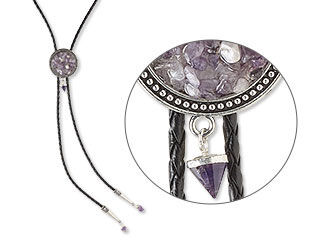
- Pin to bolo tie: Cut back off the brooch and use epoxy to bond it to a bolo back. String braided bolo cord, polish the pin and finish the tie with coordinated tips. Works for both men's and women's styles!
- Brooch to pendant: Clean the brooch, tighten the pin back and use the brooch converter bail turn it into a pendant. String with coordinated gemstone, glass or crystal beads.
- Watch to storage box: This is more of a craft idea to repurpose jewelry. Cover the lid of a breath mint box with polymer clay, then bond watch parts, stray metal findings or a broken brooch to it. A few more components to top it off, and it makes a pretty gift or collector box.
Final tips for identifying, reusing and repurposing old jewelry and other pieces:
- Keep stuff! Odds and ends can be a wealth of materials and replacement parts.
- Shop flexibly! Don't get too hung up on what something is "supposed to" be.
- Examine everything! Look carefully to find those rare, exotic or just plain beautiful accessory potentials.
The side treasure is developing a fun hobby that'll get you out meeting people, as well as exploring new places. Use a keen, imaginative eye; you'll never know what you'll find!
Shop for Your Materials Here:
Have a question regarding this project? Email Customer Service.
Copyright Permissions
All works of authorship (articles, videos, tutorials and other creative works) are from the Fire Mountain Gems and Beads® Collection, and permission to copy is granted for non-commercial educational purposes only. All other reproduction requires written permission. For more information, please email copyrightpermission@firemtn.com.
